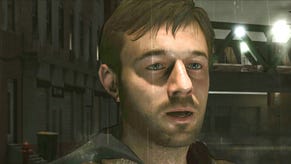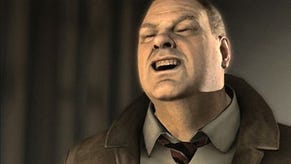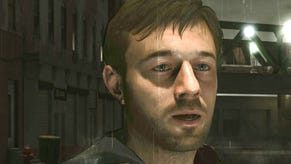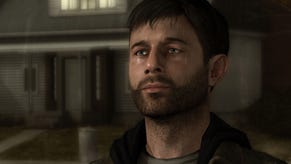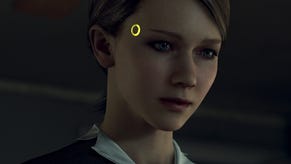Heavy Rain: The Origami Killer
Is this living?
As Madison begins exploring the exterior of the house, which a sign reveals to be the home of the local taxidermist, Cage explains how she's being controlled. The left analogue stick does the movement of her head, rather than her whole body. To make characters move you press and hold the right trigger; they will travel in the direction they're facing. It's "very simple and very intuitive", he reckons.
Madison walks up to the front door. Cage shows how you can choose whether to ring or knock, or what to shout through the letterbox. The options appear on the screen as text, as we've seen in previous games, but to select one you tilt the Sixaxis. The idea is you can move, interact with the environment and talk at the same time - you don't have to wait while your character carries out instructions.
Having established the house is empty and the front door is locked, Madison looks for an alternative point of entry. She comes across a barrel lying near a window that's been left ajar. The chap holding the Sixaxis demonstrates how you can push the barrel by pushing the controller forwards, and force the window up by shaking the Sixaxis up and down.
Inside, the house looks just like it did in the trailer; dingy and dirty, all shabby furniture and yellowing wallpaper. It's full of stuff and it looks lived in. "Sometimes in games you see living rooms that look more like football stadiums than real living rooms, and we didn't want that," says Cage. He confirms you can interact with everything you see - sit on the rocking chair, open the cupboards, turn on the television. It's all context-sensitive; when you're next to items icons appear on screen to show you what button to press to perform the relevant action.
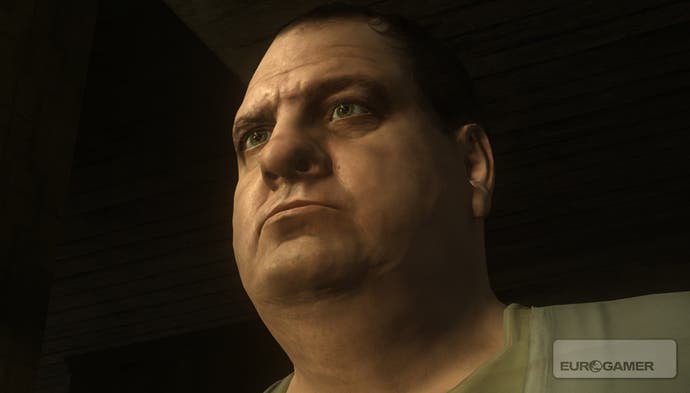
Madison takes a brief tour of the garage, where a chainsaw lies on the floor. She tries the switch-operated door to the exterior and discovers it won't open fully. After returning to the main house, she proceeds up the stairs. "We're just having a look around, it's just exploration. Everything's fine," says Cage, but the soundtrack suggests he's lying, having shifted from heavy piano to ominous strings.
He's lying. Madison swings open the bathroom door to reveal there's a dead woman in the bathtub, her head and torso submerged in a pool of blood. Our heroine gasps, stumbles out of the room and opens another door. Just like in the trailer, we see oddly posed and dressed mannequins; except now we see they aren't mannequins at all, but real women who have been gutted and stuffed by the taxidermist.
"Oh sh**," says Cage. The strings reach a peak. The screen splits into two panes, and in the one that takes up the left-hand third of the screen we see a man pulling up outside the house and getting out of his car. In the right hand pane, Madison hears the car and starts looking frantically for an escape route. She heads for the stairs as he enters the house and heads for the kitchen. This isn't a cut-scene, confirms Cage; she's being controlled all the while, and the guy doing the demo is being sure to creep rather than run so the taxidermist doesn't hear anything.
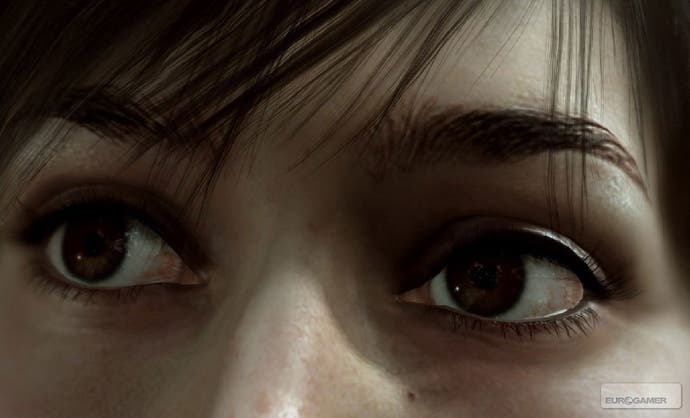
As he settles down in an armchair and turns the TV on, Madison carefully and quietly opens the door to the garage. She presses the switch, rolls under the gap, races to her motorbike and rides away to safety. The strings ebb away and the ponderous piano music returns. Cage and his audience breathe a sigh of relief.
"That was cool, that was okay," he says. "But that was one story. We made it out of the house, we didn't get caught. We will call the police and the guy will be arrested. But what if, when we were exploring the house, we had changed something - left a cupboard door open, maybe - and the guy had noticed? What if, when we were escaping, we didn't catch that bottle we knocked over, and it smashed and made a noise?" Any number of actions, explains Cage, could have changed the outcome. So, "Let's play differently and see what happens."



